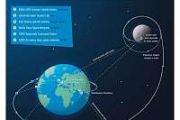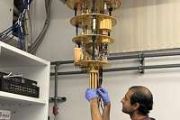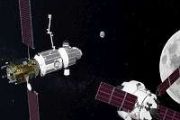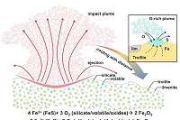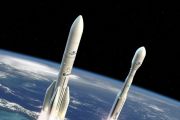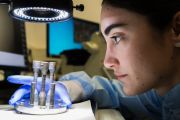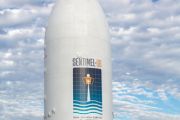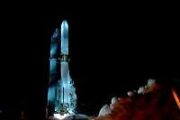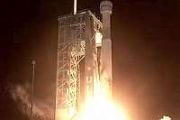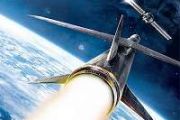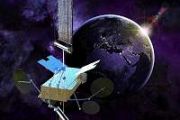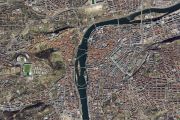
Copernical Team
ICEYE unveils Dwell Fine for enhanced earth observation with SAR imaging
 ICEYE, a pioneer in synthetic aperture radar (SAR) satellite technology, has announced the launch of its Dwell Fine imaging mode, a significant advancement in Earth Observation and persistent monitoring capabilities. This new mode enhances the existing Dwell mode and builds on the advancements of the Spot Fine mode introduced in June 2023. Dwell Fine offers a remarkable 50-centimeter resolution,
ICEYE, a pioneer in synthetic aperture radar (SAR) satellite technology, has announced the launch of its Dwell Fine imaging mode, a significant advancement in Earth Observation and persistent monitoring capabilities. This new mode enhances the existing Dwell mode and builds on the advancements of the Spot Fine mode introduced in June 2023. Dwell Fine offers a remarkable 50-centimeter resolution, Harnessing Sunlight from Above: The Rise of Skysun's Solar Solutions
 Drawing inspiration from historical engineering challenges like the Tacoma Narrows Bridge disaster, Skysun LLC, based in Cleveland, Ohio, has pioneered the development of suspended solar panels, overcoming the potential for destructive resonance with NASA's Glenn Research Center's assistance. The collaboration began in 2016 when Skysun's founder, Jim Clair, sought to validate the resilience of h
Drawing inspiration from historical engineering challenges like the Tacoma Narrows Bridge disaster, Skysun LLC, based in Cleveland, Ohio, has pioneered the development of suspended solar panels, overcoming the potential for destructive resonance with NASA's Glenn Research Center's assistance. The collaboration began in 2016 when Skysun's founder, Jim Clair, sought to validate the resilience of h Unified Theory Unravels the Mystery of Sand Ripples Across Earth and Mars
 Researchers from Ben-Gurion University of the Negev, including Prof. Hezi Yizhaq and Prof. Itzhak Katra, along with international collaborators, have proposed a new theory that could explain the formation of sand ripples on both Mars and Earth, challenging the prevailing belief that these features could not be formed under Earth's conditions. Published in Nature Geoscience, their findings sugges
Researchers from Ben-Gurion University of the Negev, including Prof. Hezi Yizhaq and Prof. Itzhak Katra, along with international collaborators, have proposed a new theory that could explain the formation of sand ripples on both Mars and Earth, challenging the prevailing belief that these features could not be formed under Earth's conditions. Published in Nature Geoscience, their findings sugges ESA Awards Atheras Analytics Contract for Next-Gen Satellite Constellation Ground Software Development
 The European Space Agency (ESA) has chosen Atheras Analytics SAS, based in Paris, for a significant 12-month project focused on the creation of an advanced Ground Segment Dimensioning Tool. This tool is designed to optimize the operation and analysis of satellite constellations, which may comprise networks in varying orbits, all equipped with the capability for inter-satellite communication. It
The European Space Agency (ESA) has chosen Atheras Analytics SAS, based in Paris, for a significant 12-month project focused on the creation of an advanced Ground Segment Dimensioning Tool. This tool is designed to optimize the operation and analysis of satellite constellations, which may comprise networks in varying orbits, all equipped with the capability for inter-satellite communication. It Cosco Shipping Upgrades Fleet Safety with Iridium's Advanced GMDSS System
 Iridium Communications Inc. (NASDAQ: IRDM) has reported that Cosco Shipping (CSSC), the leading commercial fleet globally with 1,417 vessels, has initiated the integration of Iridium Global Maritime Distress and Safety System (GMDSS) terminals across its ships. The installation of the Lars Thrane LT-3100S terminal on the vessel Cosco Tengfei signifies CSSC's commitment to the paramount safety of
Iridium Communications Inc. (NASDAQ: IRDM) has reported that Cosco Shipping (CSSC), the leading commercial fleet globally with 1,417 vessels, has initiated the integration of Iridium Global Maritime Distress and Safety System (GMDSS) terminals across its ships. The installation of the Lars Thrane LT-3100S terminal on the vessel Cosco Tengfei signifies CSSC's commitment to the paramount safety of Comsat Architects and Ubotica Technologies Unite to Deploy AI in Orbit
 In a groundbreaking move, Comsat Architects, renowned for its pioneering work in space communications, has teamed up with Ubotica Technologies, leaders in autonomous AI satellite technology. This collaboration marks a significant step forward in the integration of Artificial Intelligence (AI) into space-based communication and Earth observation systems aboard small satellites in low Earth orbit,
In a groundbreaking move, Comsat Architects, renowned for its pioneering work in space communications, has teamed up with Ubotica Technologies, leaders in autonomous AI satellite technology. This collaboration marks a significant step forward in the integration of Artificial Intelligence (AI) into space-based communication and Earth observation systems aboard small satellites in low Earth orbit, AI-Enabled Satellites to Revolutionize Earth Observation and Communications
 In a landmark move, Comsat Architects has partnered with Ubotica Technologies to infuse artificial intelligence into space technologies, specifically focusing on enhancing the capabilities of small satellites in low Earth orbit for real-time Earth monitoring and intelligence.
Comsat Architects, offering expertise in space communication analysis, software development, and aerospace technolo
In a landmark move, Comsat Architects has partnered with Ubotica Technologies to infuse artificial intelligence into space technologies, specifically focusing on enhancing the capabilities of small satellites in low Earth orbit for real-time Earth monitoring and intelligence.
Comsat Architects, offering expertise in space communication analysis, software development, and aerospace technolo SpaceX Crew-7 Astronauts Complete Monumental 200-Day Science Expedition on ISS
 Four astronauts from NASA's SpaceX Crew-7 have safely returned to Earth, culminating a vital science expedition aboard the International Space Station (ISS). This mission, marking SpaceX's 7th crew rotation under NASA's Commercial Crew Program, witnessed an array of research and technology demonstrations led by the ISS National Laboratory designed to benefit humanity and foster commercial opport
Four astronauts from NASA's SpaceX Crew-7 have safely returned to Earth, culminating a vital science expedition aboard the International Space Station (ISS). This mission, marking SpaceX's 7th crew rotation under NASA's Commercial Crew Program, witnessed an array of research and technology demonstrations led by the ISS National Laboratory designed to benefit humanity and foster commercial opport "Owl Night Long" Expands Synspective's Constellation with Rocket Lab's Precision Delivery
 Rocket Lab USA, Inc. (Nasdaq: RKLB) has reported the successful launch of its 45th Electron rocket, reinforcing its partnership with Synspective by deploying another critical satellite into Synspective's Earth-observation constellation. The mission, dubbed "Owl Night Long," saw the Electron rocket take off from Pad B at Rocket Lab's Launch Complex 1 in New Zealand, at 04:03 NZDT on March 13, 202
Rocket Lab USA, Inc. (Nasdaq: RKLB) has reported the successful launch of its 45th Electron rocket, reinforcing its partnership with Synspective by deploying another critical satellite into Synspective's Earth-observation constellation. The mission, dubbed "Owl Night Long," saw the Electron rocket take off from Pad B at Rocket Lab's Launch Complex 1 in New Zealand, at 04:03 NZDT on March 13, 202 Japan space rocket explodes seconds after launch
 A rocket made by a Japanese company exploded seconds after launch on Wednesday, in a spectacular failure for the start-up's bid to put a satellite into orbit.
Tokyo-based Space One's 18-metre (60-foot) Kairos rocket blasted off in the coastal Wakayama region of western Japan, carrying a small government test satellite.
But around five seconds later, the solid-fuel rocket erupted in fire,
A rocket made by a Japanese company exploded seconds after launch on Wednesday, in a spectacular failure for the start-up's bid to put a satellite into orbit.
Tokyo-based Space One's 18-metre (60-foot) Kairos rocket blasted off in the coastal Wakayama region of western Japan, carrying a small government test satellite.
But around five seconds later, the solid-fuel rocket erupted in fire, 

